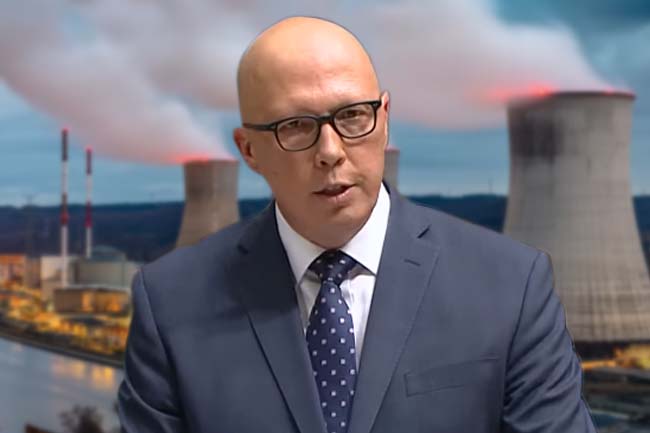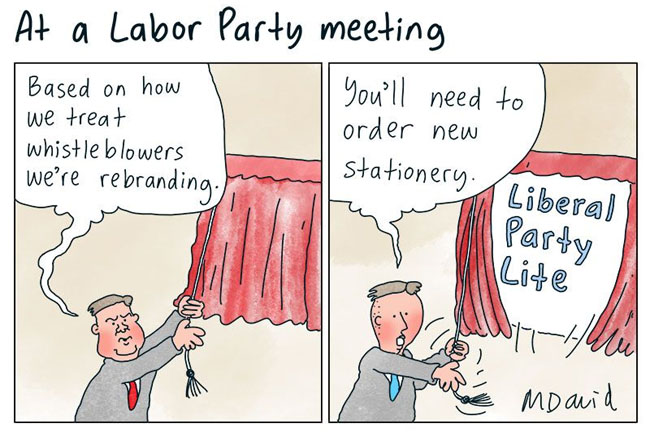The effect on our economy from the COVID-19 crisis has demonstrated the problems with market liberalism, writes Professor John Quiggin.
THE COVID-19 pandemic has upended the debate over economic policy. Ideas that were once unthinkable, like Universal Basic Income, are suddenly commonplace. But dead ideas still walk among us.
In the immediate aftermath of the Global Financial Crisis, I started work on a book looking at bad economic ideas that had been, as I thought, finally killed by the crisis. These ideas formed part of a package variously known as neoliberalism, economic rationalism and (my preferred term) market liberalism.
As the book progressed, however, I realised that these ideas were being reanimated in zombie form (a term I borrowed from Paul Krugman, winner of the economics Nobel award, as well as being a columnist for the New York Times). So, the title of my book was changed to ‘Zombie Economics: How Dead Ideas Still Walk Among Us’.
A crucial rule in zombie movies is “double tap”. That is, it’s not sufficient to kill a zombie idea once — it has to be done at least twice. The COVID-19 pandemic has shown, yet again, how disastrously wrong the ideas of market liberalism have been. I’ve decided to write a series of articles on the zombie apocalypse of ideas we are now facing, focusing on those I looked at in ‘Zombie Economics’.
A couple of weeks ago, I looked at the “Great Moderation”. This time, I’m going to look at the efficient-market hypothesis (EMH): the idea that the prices generated by financial markets represent the best possible estimate of the value of any investment. (In the version most relevant to public policy, the EMH states that it is impossible to outperform market valuations on the basis of any public information.)
Support for the EMH has always relied more on its consistency with free market ideas in general than on clear empirical evidence. The absurdities of the late 1990s dot-com bubble and bust ought to have killed the notion. But, given the financial sector’s explosive growth and massive profitability in the early 2000s, the hypothesis was too convenient to give up.
Some advocates developed elaborate theories to show that the billion-dollar values placed on companies delivering dog food over the internet were actually rational. Others simply treated the dot-com bubble as the exception that proves the rule.
Either way, the lesson was the same: governments should leave financial markets to work their magic without interference. That lesson was followed with undiminished faith until it came to the edge of destroying the global economy in late 2008.
Despite being generally discredited, the EMH lived on in zombie form. This is most evident in the attention paid to ratings agencies and bond markets in discussion of the “sovereign debt crisis” in Europe, despite the fact that it was the failure of these very institutions, as well as the speculative bubble they helped generate, that created the crisis in the first place.
The COVID-19 pandemic provides yet more evidence against the EMH. At the high point of enthusiasm for neoliberalism, just before the GFC, it was suggested that newly-created “prediction markets” would provide advance warning of pandemics. In reality, financial markets woke up to the severity of the crisis around the same time as the general public (the ASX reached an all-time peak on 20 February). Those with inside access to assessment by government analysts, pointing to the likely severity of the crisis, sold early and cashed in huge profits, as in the case of U.S. Senator Richard Burr.
Having failed to provide warnings that might have helped businesses prepare for the pandemic, the financial sector has been part of the problem in responding. The huge volumes of debt taken on since the GFC have raised the risk of another crisis in the financial sector. Meanwhile, despite the dizzying array of complex financial products they offer, none has been of any significant value in responding to this disaster. Taking the most obvious risk, that of death from the virus, lots of life insurance policies have an exclusion for pandemics, though they are being shamed into removing (or, in PR terms, “clarifying”) them now.
As the crisis proceeds, we will doubtless see the failure of financial institutions on a large scale. The first such failure, a small bank in West Virginia, has already happened. Large-scale default on corporate debt is highly likely. This time around, the mistakes of the 2008 bailout must be avoided. If banks need to be rescued, they should be nationalised. If the finance sector emerges from the crisis much smaller and less powerful than before, so much the better.
Professor John Quiggin is an Independent Australia columnist and an economist and Laureate Fellow at the University of Queensland. You can follow him on Twitter @johnquiggin.
 This work is licensed under a Creative Commons Attribution-NonCommercial-NoDerivs 3.0 Australia License
This work is licensed under a Creative Commons Attribution-NonCommercial-NoDerivs 3.0 Australia License
Support independent journalism Subscribe to IA.












